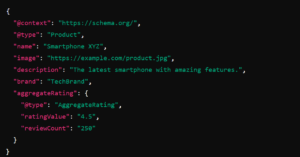16, Nov 2024
Rich Snippets for SEO: A Basic Guide for 2025 to Boost CTR and Visibility
Rich snippets are enriched search results that stand out on Google’s Search Engine Results Pages (SERPs), designed to offer more context and boost visibility. By using structured data markup such as JSON-LD, Microdata, or RDFa, webmasters can highlight specific content (like ratings, recipes, products, etc.), making it more attractive to users. In this article, we’ll explore the types of rich snippets, their importance for SEO, and how to implement them effectively.
What Are Rich Snippets?
Rich snippets are enhanced search results that use structured data to provide more detailed information directly in the search results. They can include extra features like ratings, prices, images, or product details, depending on the content of the page.
Why Rich Snippets Matter for SEO
Rich snippets increase the visibility of your website in search engine results by displaying additional information, which leads to higher click-through rates (CTR). They help search engines better understand the context of your content, ultimately leading to better ranking potential.
Types of Rich Snippets
Here’s a summary of the different types of rich snippets and their applications:
| Rich Snippet Type | Schema Type | Displayed Information | Best Use Cases |
|---|---|---|---|
| Reviews | Review/Rating | Star ratings, aggregated reviews | E-commerce, service reviews |
| Products | Product | Price, availability, and reviews | Online stores |
| Events | Event | Date, time, and location | Concerts, webinars |
| Recipes | Recipe | Ingredients, cooking times, calories | Food blogs |
| FAQs | FAQ | Questions and answers | Help centers, blogs |
| How-To | HowTo | Step-by-step instructions | DIY, tutorials |
How to Implement Rich Snippets
Adding rich snippets to your website involves integrating structured data through JSON-LD (the most widely recommended format by Google). Here’s a step-by-step process to implement it:
- Create Structured Data: Write schema code like JSON-LD.
- Embed into Your HTML: Add the code to the
<head>or<body>of your page. - Validate with Google’s Structured Data Testing Tool: Ensure that your markup is correct.
- Monitor in Google Search Console: Check for errors and improvements in performance.
Code Example for a Product Page:

Best Practices for Rich Snippets
To get the most out of rich snippets, follow these best practices:
- Use JSON-LD for Markup: This is the easiest and most Google-friendly method.
- Test Your Markup: Use tools like Google’s Structured Data Testing Tool to ensure correctness.
- Use Relevant and Accurate Data: Make sure the data you provide is relevant and up-to-date, especially for products and events.
- Implement for Key Pages: Focus on high-traffic pages that can benefit from enhanced visibility.
Common Misconceptions about Rich Snippets
It’s easy to confuse rich snippets with other enhanced search results, like rich cards or featured snippets. Here’s how they differ:
| Feature | Rich Snippets | Rich Cards | Featured Snippets |
|---|---|---|---|
| Location | Within organic results | Carousel above results | Position Zero (Top Box) |
| Schema Markup | Required | Required | Not Needed |
| Visual Display | Enhanced search result | Horizontal cards | Highlighted answer box |
Case Studies: How Rich Snippets Improve SEO
Companies that implement rich snippets see improvements in engagement and organic traffic. For example, an e-commerce store using product-rich snippets reported a 20% increase in CTR from Google search.
Conclusion
Rich snippets are a powerful tool for improving your site’s visibility in search engines, driving more traffic, and providing users with the most relevant information. By implementing structured data and following best practices, you can ensure your content stands out in the search results.
Ready to enhance your website with rich snippets? Get started with JSON-LD schema markup today, and watch your search results improve! Check out Google’s structured data documentation to begin.
- 0
- By newz2day.blog






